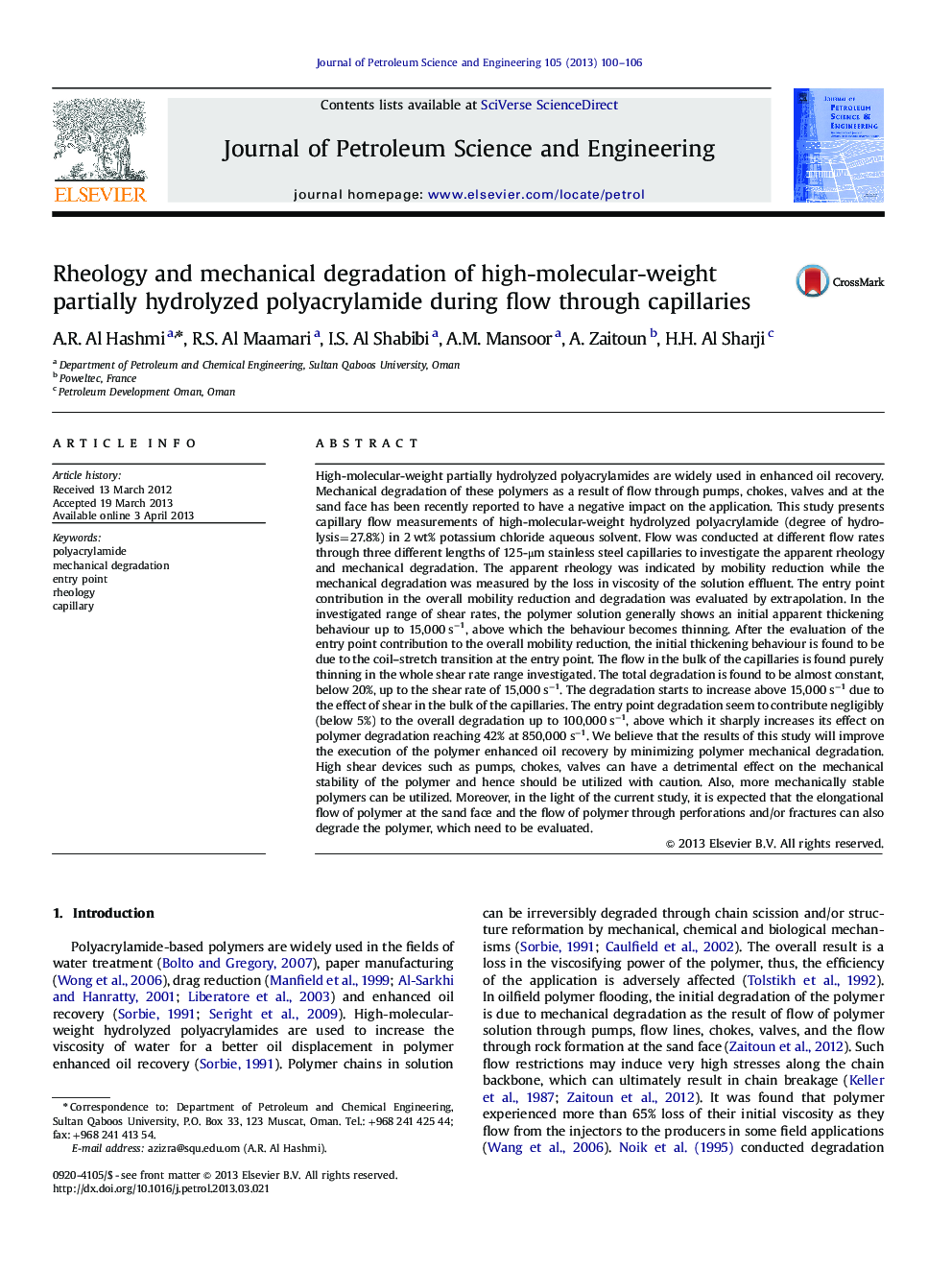| کد مقاله | کد نشریه | سال انتشار | مقاله انگلیسی | نسخه تمام متن |
|---|---|---|---|---|
| 1755245 | 1522836 | 2013 | 7 صفحه PDF | دانلود رایگان |

• Rheology and degradation of high-MW HPAM in 2% KCl have been investigated during capillary flow.
• The apparent shear thickening behaviour is found to be only due to coil–stretch transition at the entry point.
• The thinning behaviour at higher shear rates is due to mechanical degradation at entry point and bulk.
• Entry point degradation starts to take effect only at a critical shear rate of 100,000 s−1.
• We propose a molecular picture of the events at entry point and bulk contributing to rheology and degradation.
High-molecular-weight partially hydrolyzed polyacrylamides are widely used in enhanced oil recovery. Mechanical degradation of these polymers as a result of flow through pumps, chokes, valves and at the sand face has been recently reported to have a negative impact on the application. This study presents capillary flow measurements of high-molecular-weight hydrolyzed polyacrylamide (degree of hydrolysis=27.8%) in 2 wt% potassium chloride aqueous solvent. Flow was conducted at different flow rates through three different lengths of 125-μm stainless steel capillaries to investigate the apparent rheology and mechanical degradation. The apparent rheology was indicated by mobility reduction while the mechanical degradation was measured by the loss in viscosity of the solution effluent. The entry point contribution in the overall mobility reduction and degradation was evaluated by extrapolation. In the investigated range of shear rates, the polymer solution generally shows an initial apparent thickening behaviour up to 15,000 s−1, above which the behaviour becomes thinning. After the evaluation of the entry point contribution to the overall mobility reduction, the initial thickening behaviour is found to be due to the coil–stretch transition at the entry point. The flow in the bulk of the capillaries is found purely thinning in the whole shear rate range investigated. The total degradation is found to be almost constant, below 20%, up to the shear rate of 15,000 s−1. The degradation starts to increase above 15,000 s−1 due to the effect of shear in the bulk of the capillaries. The entry point degradation seem to contribute negligibly (below 5%) to the overall degradation up to 100,000 s−1, above which it sharply increases its effect on polymer degradation reaching 42% at 850,000 s−1. We believe that the results of this study will improve the execution of the polymer enhanced oil recovery by minimizing polymer mechanical degradation. High shear devices such as pumps, chokes, valves can have a detrimental effect on the mechanical stability of the polymer and hence should be utilized with caution. Also, more mechanically stable polymers can be utilized. Moreover, in the light of the current study, it is expected that the elongational flow of polymer at the sand face and the flow of polymer through perforations and/or fractures can also degrade the polymer, which need to be evaluated.
Journal: Journal of Petroleum Science and Engineering - Volume 105, May 2013, Pages 100–106